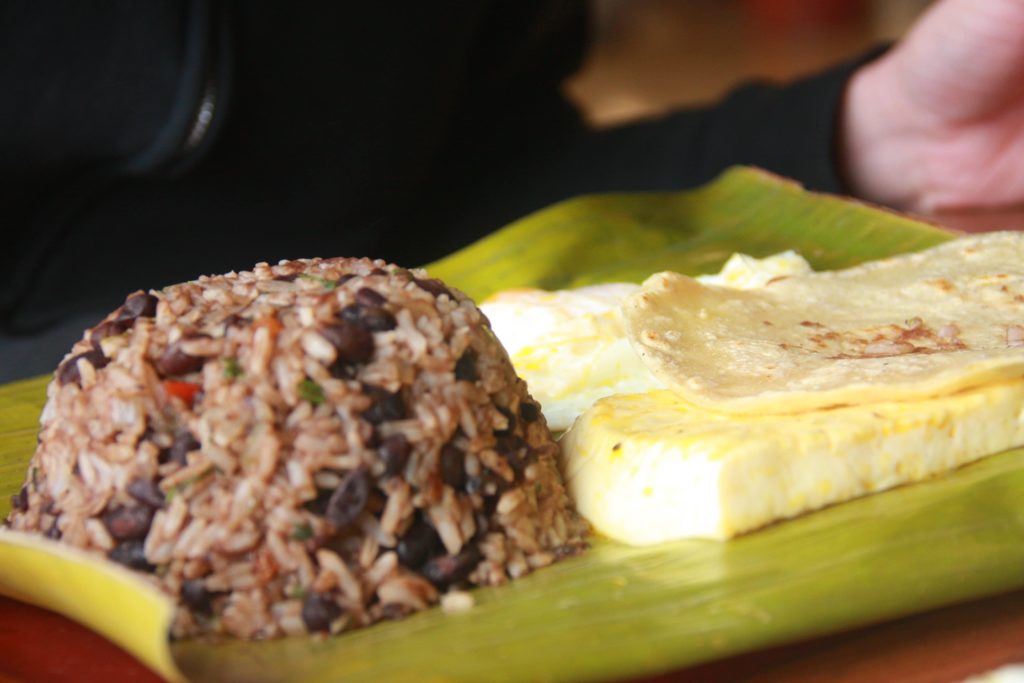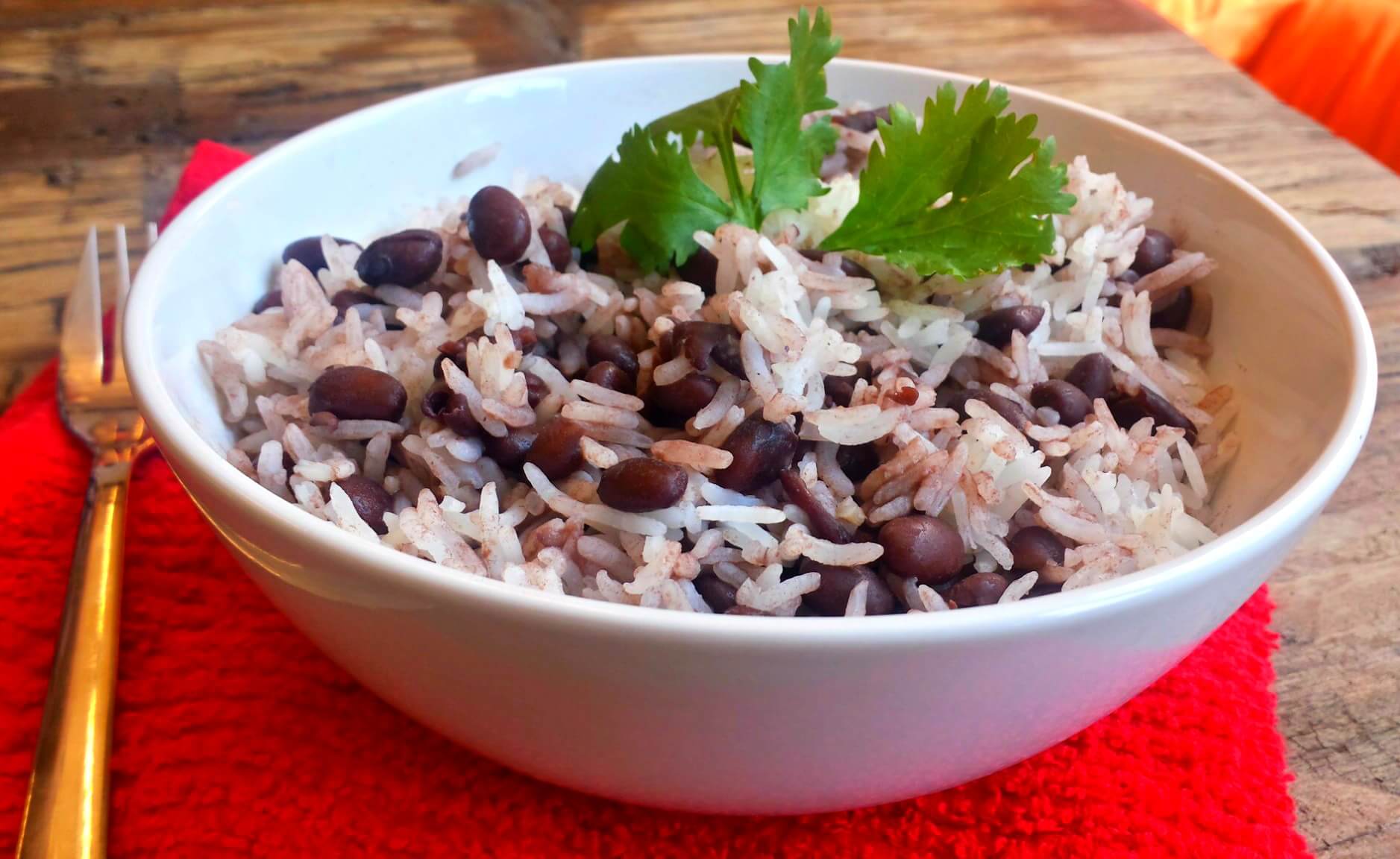How to prepare Gallo Pinto
If you’ve ever been to Costa Rica, you’ll know that rice and black beans, the famous gallo pinto, are staples in the country’s cuisine. Casado is a typical dish that serves rice and beans separately on a plate. Rice and beans is a meal served along the country’s Caribbean coast that infuses the dish’s namesake ingredients with coconut. And gallo pinto – the focus of this article – is a beautiful blend of rice and beans that can be seen on every breakfast table in any Costa Rican hotel, restaurant or home in the countryside.

Gallo pinto at the heart of Tico breakfast
If you’re not used to eating beans for breakfast, you’re missing out! Many countries around the world choose to include beans in their morning routine, as evidenced by English, Japanese and Indian cuisines, among others. Although beans can sometimes be a little heavy to eat, especially early in the morning, gallo pinto is surprisingly light. Rich in nutrients and proteins, it’s no wonder that Costa Ricans are a strong, hard-working people with seemingly infinite stamina! The Gauls invented the magic potion, and ticos the gallo pinto! As a foreign visitor, you’ll find gallo pinto at some point during your trip. Hotels serve it, restaurants serve it and tour operators who include breakfast in their tours or activities serve it. Any breakfast described as “typical” in Costa Rica includes it. On the other hand, breakfasts described as “American” or “continental” generally does not. Although side dishes vary from place to place, gallo pinto orders are often accompanied by a few pieces of fried plantains, a few slices of avocado, a slice of fried cheese, a tortilla and sometimes eggs prepared according to your preferences. In taste, gallo pinto is neither spicy nor particularly salty, but it has a powerful flavor. The spicy touch of cilantro is the most obvious, followed by a hint of garlic and a light taste of vinegar from Salsa Lizano (an ultra-popular salty sauce in Costa Rica).
The health benefits of gallo pinto
It’s official! Breakfast is the most important meal of the day; it’s responsible not only for waking us from our slumber, but also for keeping us energized until lunch and beyond. Fortunately, gallo pinto is up to the challenge. From the mineral and fiber content of its vegetables and rice (especially when white rice is replaced by whole-grain brown rice) to the protein power of its black beans, gallo pinto is wonderfully nutritious for our bodies. Add the fact that the dish is vegetarian and can be prepared vegan. To top it all off, the meal is made with whole ingredients and is unprocessed.
Ingredient list:
- 3 cups uncooked white rice (whole-grain brown rice may be used in place of white rice if desired)
- 3 cups water
- 1 teaspoon salt (optional)
- 1/4 cup butter
- 1 tablespoon Achiote paste (optional)
- 3 garlic cloves, finely chopped
- 2 small to medium red peppers (or 1 oversized red bell pepper), diced
- 1 large red onion, diced
- 1 lbs black kidney beans (or beans of your choice) *do not drain liquid from can
- 3 tablespoons Lizano Salsa
- 2 sprigs coriander, finely chopped
Liste du matos :
- Cuiseur à riz
- Grande poêle à frire
First, cook the rice
For this step, you’ll need :
- 3 cups uncooked white rice (brown rice can be substituted if desired)
- 3 cups water
- 1 teaspoon salt (optional)
If you don’t have a rice cooker, I highly recommend you buy one! Not only is rice preparation quick and easy, but the machine can also be used for a variety of other purposes, including making oatmeal, hard-boiled eggs, soaked beans, and more! Anyway, if you don’t have access to a rice cooker right now, don’t worry, gallo pinto can be made with a simple saucepan.

The packaging of most bags of rice includes instructions for preparing the grain. So if you prefer to cook your rice this way, go ahead, and skip the instructions below and start reading from “Next, prepare Gallo Pinto”. 1 – Add the rice to your rice cooker. 2 – Add the water to your rice cooker. The water should completely cover the rice, although a few grains may float to the top. 3 – If desired, add salt to the water/rice mixture in the rice cooker. 4 – Switch on the rice cooker, cover and leave to stand until the rice is cooked (most rice cookers switch off automatically when the rice is cooked, another argument in favor of this great appliance!)
Next, prepare the Gallo Pinto
For this step, you will need :
- 1/4 cup butter
- 1 tablespoon Achiote paste (optional)
- 3 garlic cloves, finely chopped
- 2 small-to-medium sweet red peppers (or 1 oversized red bell pepper), diced
- 1 large red onion, diced
The use of achiote paste is entirely optional. So if you don’t have access to it where you are, ignore the instructions below. I like to add achiote to rice dishes because it’s widely used throughout Costa Rica and gives rice a subtle barbecue flavor. But gallo pinto can be (and often is) prepared without it. 1 – Add butter to a frying pan over medium-high heat. 2 – When the butter is almost melted, add the achiote paste to the pan. Achiote paste doesn’t melt as well as butter alone: use a fork or spatula to break up the paste and move it into the pan. Achiote (annatto) is often used as a natural food coloring due to its brilliant hue, and is also the secret behind yellow rice dishes in Costa Rica. 3 – Once the achiote has almost melted, reduce the stove temperature to medium-low and add the garlic. Stir the garlic regularly into the butter/achiote mixture in the pan to spread the flavor and avoid burning the garlic. 4 – Add the diced bell pepper(s) and onion to the butter/achiote/garlic mixture in the pan and sauté for five to ten minutes, until the onions are cooked to your liking.

Mix the rice and the beans
For this step, you will need :
- 1 lbs cooked black beans (or beans of your choice) *do not drain liquid from can
- Cooked rice (in rice cooker)
This step makes the dish what it is: a compilation of rice and beans with buttery, smoky and garlicky flavors. 1 – Reduce the stove setting to low, add the cooked rice to the pan and stir. 2 – Separate the beans from the can and keep the bean liquid separate. Add the beans to the pan and stir. Add a few tablespoons at a time of the bean liquid from the can to the saucepan and stir. Use your own judgment to determine whether you want your gallo pinto wet or dry. Traditionally, gallo pinto is sticky but not wet or mushy.
And, the final touch!
For this step, you will need :
- 3 tablespoons Lizano Salsa
- 2 sprigs coriander, finely chopped
Some people don’t like the taste of Salsa Lizano or coriander. If so, skip the additions below. Although both ingredients are included in the traditional Costa Rican gallo pinto, a less flavorful version of the dish can be prepared without one or both. Or, get creative and season your gallo pinto with whatever you like! Gallo Pinto a la carbonara? Bolognese? Mustard? Go wild!




No comment regarding « How to prepare Gallo Pinto »